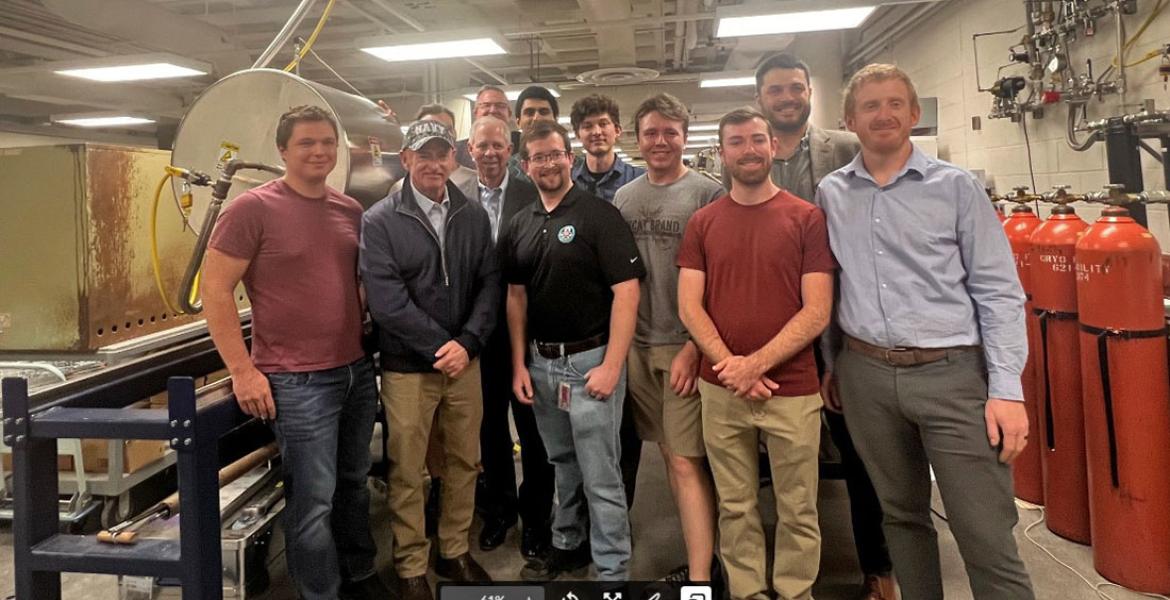Arizona Sen. Mark Kelly Tours Wind Tunnel Facilities, Praises Research
Arizona Sen. Mark Kelly visited the University of Arizona with the goal of observing quantum computing and hypersonic research initiatives and programs on April 5. Kelly toured the university’s Meinel Optical Sciences building and the Aerospace and Mechanical Engineering building.
In recent years, researchers from both the James C. Wyant College of Optical Sciences and the aerospace and mechanical engineering department have secured grant funding from the state and federal government to advance quantum computing and hypersonic research and technology.
Kelly voiced support for this research: “Funding is everything,” he said. “There is not a dollar better spent than spent on education.”
Kelly spoke with UA President Robert C. Robbins, Craig M. Berge Dean of Engineering David W. Hahn and assistant professors of aerospace and mechanical engineering Alex Craig and James Threadgill about hypersonic wind tunnels. These advanced testing facilities simulate the extremely high speeds encountered by objects moving through the atmosphere at hypersonic speeds, typically above Mach 5 (five times the speed of sound). The UA has Mach 5 and Mach 4 wind tunnels.
These tunnels help to create conditions similar to those experienced during hypersonic flight, allowing researchers to study aerodynamics, heat transfer and other factors relevant to hypersonic design and performance.
According to Kelly, this research helps create pathways that seamlessly integrate education with traditionally professional domains.
“The hope is that a lot of these students that we recruit here, that get degrees here, wind up working in companies locally,” he said.
According to Kelly, this also allows students to be involved in “doing real research with real hardware.”


